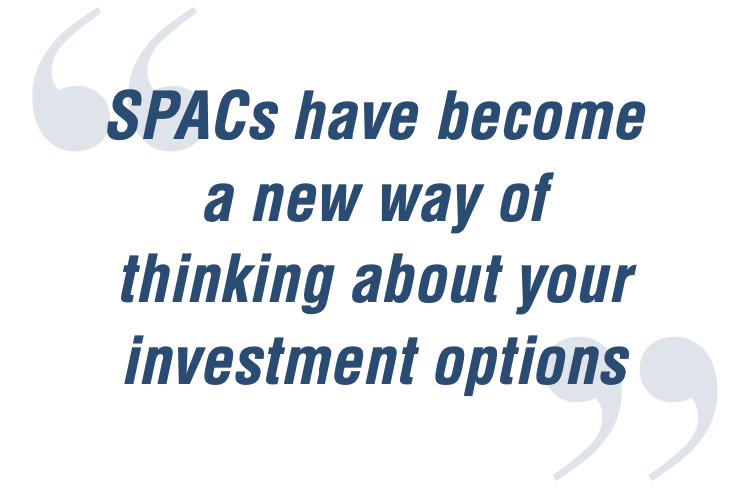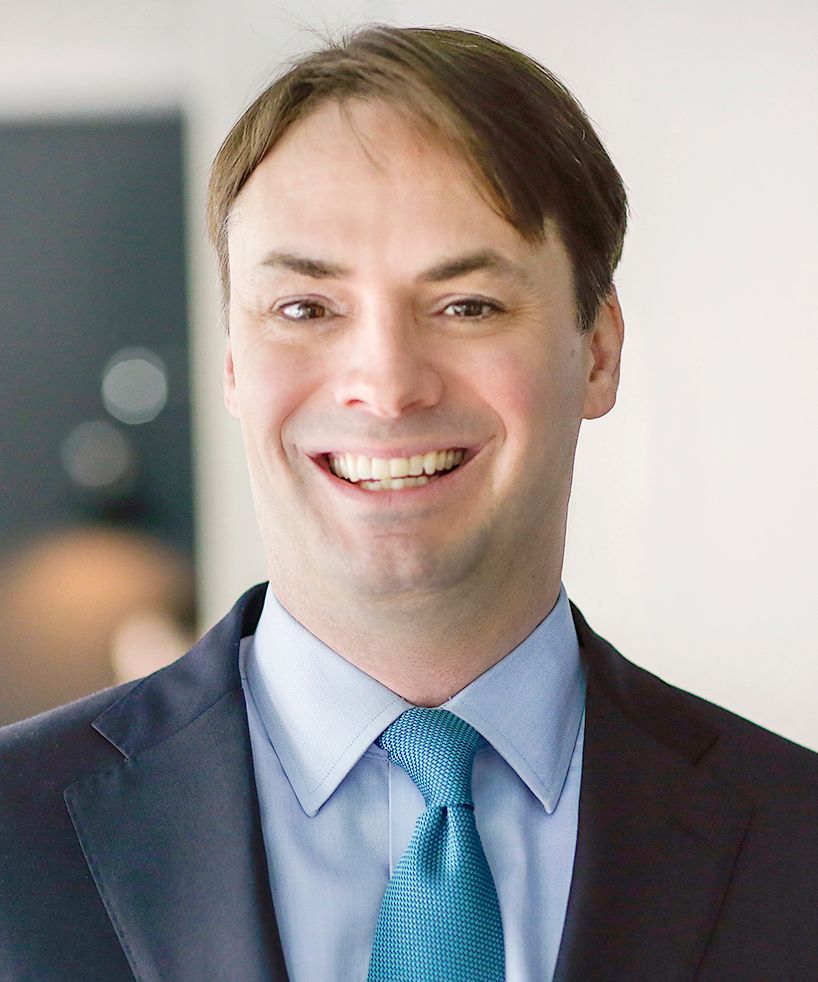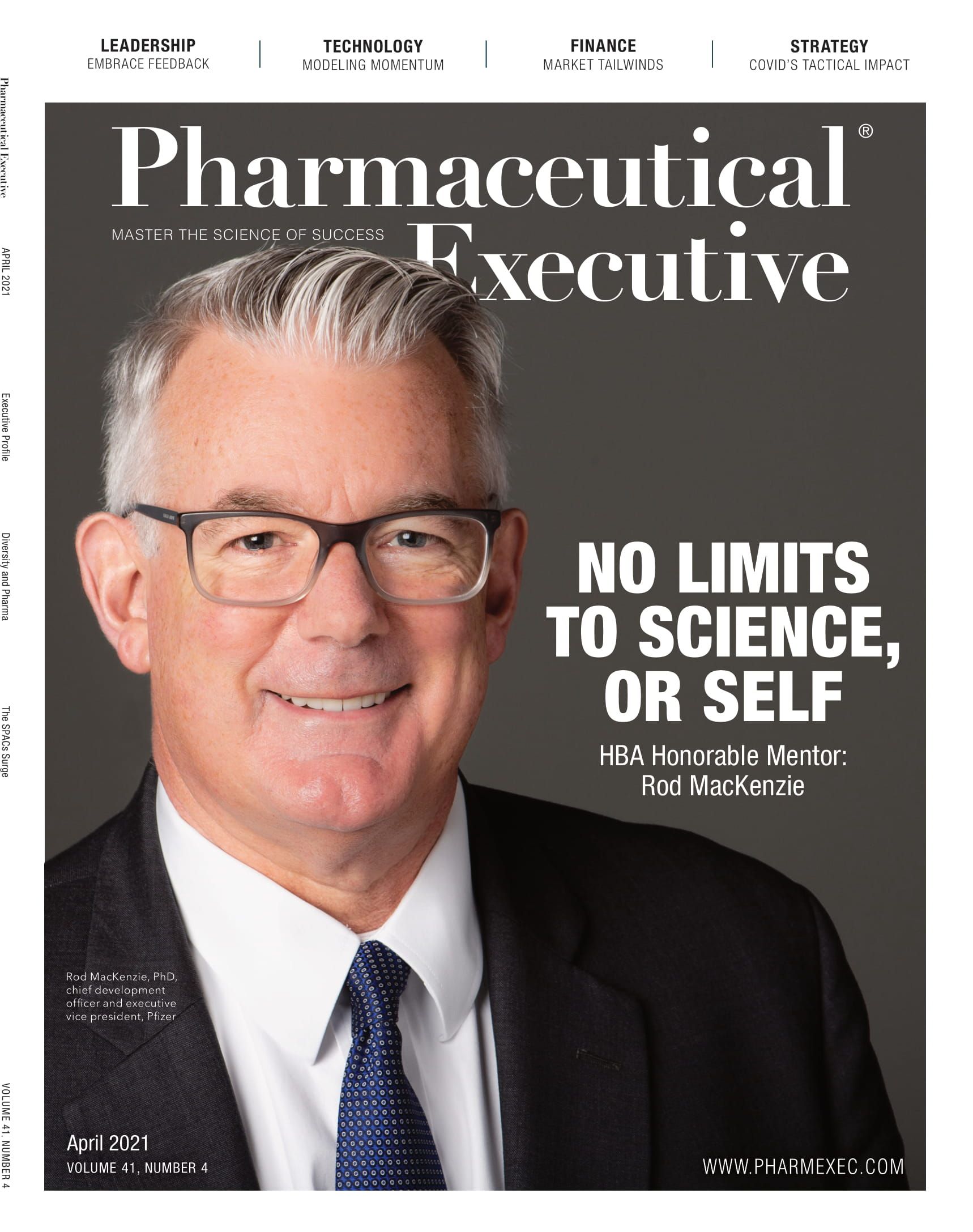SPACs: From Fad to Fixture: COVID Sparks Greater Use of IPO Alternative
The “blank-check” method has emerged as a worthwhile bet for biopharma companies looking to raise capital and go public, but will its attractiveness fade along with the pandemic?
While the world remains laser-focused on COVID-19, the development of powerful vaccines in record time, and enough political, societal, and economic uncertainty to rattle the nerves of investors, the Wall Street community mostly has kept its collective attention on life after the pandemic.
In other words, it turned out to be a pretty good run for the financial markets and for investors in general, employing new and creative strategies to take full advantage of the next opportunity around the corner.
For many in biopharma, that next opportunity came in the form of an initial public offering through a special purpose acquisition company, or SPAC, a shell corporation designed to take companies public without having to go through the steps required in a traditional IPO process.
The US Securities and Exchange Commission (SEC) defines SPACs as “blank-check” companies created specifically to pool funds in order to finance a merger or acquisition opportunity, usually one that has yet to be identified, within a set timeframe.1
Unlike a traditional IPO that starts with a particular company looking to go public, disclosing extensive details on its operations, and attracting investors as shareholders, the SPAC route to an IPO often is described as a reverse merger.
The typical SPAC sponsor organizes a small team of managers with prior experience in private equity deals and M&A success to identify and target a specific company for investment.
For pharma and biotech targets, the sponsor company often involves industry talent with extensive knowledge and experience in the sector, essentially helping establish a trust in the SPAC’s management and investment strategies.

“Industry experience is super critical, particularly in pharma and biotech,” Glenn Hunzinger, US pharma and life sciences leader at PwC, told Pharm Exec. “Outside of our industry, I think people may invest more broadly around people that know how to invest.”
When established, the SPAC has no other business operations, requires fewer disclosures, no acquisition target at the outset, and holds investor cash in a separate, interest-bearing account until the eventual SPAC-targeted acquisition closes within the scheduled timeframe, usually two years.
Upon completion of the acquisition, a “de-SPACing” transaction takes place and the newly merged company typically becomes listed on the NYSE, Nasdaq, or other large exchange. The organizing sponsors generally can receive a substantial piece of equity—usually about 20% but often higher—in the new company.
In the event that a deal does not close and the SPAC is liquidated or, prior to closing, outside investors don’t see the selected merger target as a good fit for their own interests, the investors get their money back, potentially minus some expenses.
From bumpy beginning to viable strategy
SPACs were hatched in the 1980s and ’90s, but early on were viewed unfavorably for their link to penny stocks and concerns over fraud potential. Since then, SPACs have continued to exist and regulations were implemented to prevent fraudulent activity, but the process had not been widely used in IPO transactions until recent years. While many trends that quickly burst onto the scene often fade at a similar lightning pace, investment experts now seem to view SPACs as an attractive option that likely will slow, but still remain a viable strategy well into the future.
“I think as an asset class it will be here, but the level of investment now that’s pouring into it will normalize at some time,” says Hunzinger. “I don’t know that I’d call it a fad as much as I would call it an exciting thing now, and, like all things exciting, it will just normalize down.”
He adds that with yields and interest rates low at the moment, people are looking for places to invest money to be able to generate some returns. “Combine that with the fact that the terms around the SPAC have finally matured so it’s kind of a reasonable financial product these days, whereas in the past it was a bit one-sided,” says Hunzinger. “It’s a little more flexible.”
The SPAC trend also has been bolstered by the significant amount of capital available for investors at present; SPACs offer them a way to invest not only in companies and industries, but also in management teams flush with experienced leaders or even an icon in a particular industry.

“I think you’re going to see more companies explore it,” Jeff Stoll, national life sciences strategies leader at KPMG, told Pharm Exec. “Whether they end up executing on them or not, we’ll see, but there are a bunch of things like that that I know are in play and it will be interesting to see whether they land or not.
“I would also say that we’re probably going to see some of that blow up, and that may potentially make the market a little chillier; but I think they are here to stay. Right now, people are definitely riding a wave of optimism of the markets supporting it, however, as soon as things turn, it probably will revert to more traditional ways to some extent. I do think SPACs have become a new way of thinking about your investment options.”
What led to the biotech SPAC boom
The biotech industry has continued to greatly benefit from merger activity through last year, with total IPO deal value in the sector up by 58% compared with all of 2019, according to data and analytics firm GlobalData, which noted that the COVID-19 pandemic contributed to a surge in SPAC activity.2
The GlobalData analysis noted that overall SPAC M&A deal volume in the biotech space increased by 250% in 2020 versus 2019.
“SPACs have been favorable during the disruption that COVID-19 caused to the traditional IPO process, as SPACs provide a low-risk transaction and increased certainty,” Madeleine Roche, pharma analyst at GlobalData, commented in a report.3
In addition, indications are that healthcare and life sciences deals, overall, will continue to be robust this year, according to KPMG’s 2021 Healthcare and Life Sciences Investment Outlook.4 The report labeled 2020 as the most active biopharmaceutical deal market in history, bolstered by SPAC activity.
The company surveyed nearly 300 industry leaders in 10 industry subsectors to provide perspectives on M&A trends ranging from an unprecedented disruption that included the COVID-19 pandemic, the 2020 election, policy changes, and market factors. It noted that many healthcare organizations and diagnostics and medical device makers ranked COVID-19 as one of the top factors affecting deal activity in 2020 and 2021. Meanwhile, executives from pharma and biopharma services companies ranked valuation and competition for a limited number of high-value or innovative targets as large factors influencing deal activity in both years.
In its updated full-year deal breakdown in 2020 versus the prior year, KPMG reported a total of 1,138 biopharma deals in 2020, nearly doubling the 634 sector deals in the previous year. The breakout:
- Licensing deals: 593 in 2020/360 in 2019
- Strategic R&D deals: 367/161
- Company acquisitions (non-mega mergers): 121/79
- Product acquisitions: 44/29
- Joint ventures: 12/3
- Mega mergers ($30 billion or more): 1/2
In 2020, the announced mega merger was AstraZeneca’s $39 billion plan to acquire Alexion Pharmaceuticals, a deal expected to close in September. In 2019, the Bristol Myers Squibb-Celgene deal, at $74 billion, and AbbVie-Allergan, at $63 billion, topped the activity.
Pending SPAC mergers in 2021
Through the first quarter of this year, there have already been several pending SPAC mergers in the biotech and related life sciences space, including the ARYA Sciences Acquisition Corp. III SPAC merger with Jeff Bezos-backed Nautilus Biotechnology, Inc., a company pioneering a single-molecule protein analysis platform for quantifying the human proteome. That deal was proposed in August and a definitive agreement was signed in February.
Other pending SPAC mergers, as reported by investor website StockMarketMBA.com,5 include:
- Alpha Healthcare Acquisition Corp.’s merger with Humacyte, Inc., a clinical-stage biotechnology platform company developing universally implantable bioengineered human tissue at commercial scale.
- CM Life Sciences, Inc.’s merger with Mount Sinai spinout Sema4, an AI-driven patient-centered genomic and clinical data insight platform company.
- Leisure Acquisition Corp.’s merger with Ensysce Biosciences, a clinical-stage biopharma company with a mission to solve prescription drug abuse.
- VG Acquisition Corp., a SPAC sponsored by Virgin Group, announced a deal with 23andMe, a privately held personal genomics and biotech company based in Sunnyvale, CA. Virgin Group’s Sir Richard Branson is investing $25 million.
- GX Acquisition Corp.’s pending merger with Celularity Inc., a biotech involved in cellular medicine with the development of off-the-shelf allogeneic therapies.
- Big Rock Partners Acquisition Corp.’s mid-December announcement of a merger with NueroRx, Inc., a clinical-stage, small-molecule pharma company that develops novel therapeutics for the treatment of bipolar depression and COVID-19 respiratory failure.
- Longevity Acquisition Corp.’s pending merger, disclosed in October, with 4D Pharma, a developer of live biotherapeutics, an emerging class of drugs.
“We’re in a time period where there’s a lot of dry powder capital available, and so as people are looking to find more ways to deploy that capital, I think the SPACs began to evolve, at least in life sciences,” says KPMG’s Stoll.
Dry powder capital essentially is an amount of cash set aside for investment but not yet allocated for a specific deal. In some cases, such as taking over a private company or in a spin-off situation, some may find the SPAC route to be a more efficient and quicker method than embarking on a traditional IPO, which takes a longer time period to complete, as multiple stakeholders conduct due diligence to make sure the target is the right investment.
“That doesn’t mean there isn’t diligence in SPACs, but certainly the time periods are shorter,” notes Stoll. “It’s sort of a faster, more efficient way of deploying capital for a certain type of company that would make sense.”
Will SPACs continue strong in biotech?
“It’s too early to tell,” says Jason Moran, managing director, healthcare life sciences group, KPMG Corporate Finance LLC. “SPACs haven’t been a vehicle that’s been popular in biotech and life sciences in the past, and so after—we’ll call it the frenzy—happened, you got massive stimulus, massive liquidity, and then all of a sudden superior performance of life science’s assets in part because of COVID-19.

“For sponsors, it represents optionality, and [if] they can find a quality asset to buy, they’re going to do it. But they’ll balance their own reputation. They’re not going to buy a bad asset. They’re going to try to avoid overpaying if they can, and then there’s push-and-pull that exists.”
Moran adds that down the road, out of 10 SPAC ventures, it’s possible that two, three, or more sponsors may at some point decide that they just don’t like the way assets are being priced or they can’t find anything of sufficient quality. As a result, they’ll let the SPAC expire and they’ll return the money to the investors.
From an issuer or sponsor perspective, SPACs move forward under a less traditional route where the sponsor typically has a subset of investors that don’t know what the final target is, and there is no broad roadshow.
“When you deal with a traditional IPO you’ll have a book of institutional investors,” says Moran. “When putting together the book, you want investors that are going to help you create liquidity and [also] you want a stable group of investors that are going to be holding it for the long term. You don’t want to go too far one way or the other. Then you also have holders that came into the transaction—venture capitalists and others that help capitalize the company on a pre-IPO basis and are looking to get out.”
The traditional IPO includes a variety of moving parts to create a balance involving institutional hedge funds, longer-term holders, shorter-term holders, and others. SPACs, by nature, don’t necessarily offer the sponsor quite the same ability to assemble that type of balance.“I think what you’re going to see when we return to some sort of normalcy or if there’s a down cycle is that investors are going to be less willing to sign onto these SPACs even though it’s not a firm commitment when they sign on,” believes Moran. “They’re just going to sit there and wait for the more traditional companies to come out via the more traditional IPO process.”
Are there downside risks?
As with all investment strategies, experts warn that companies and investors need to understand the variety of potential risks involved by going the SPAC route, including ongoing market fluctuations, financially committing funds in advance without an identified target, and the possibility of ultimately becoming involved in a failing company with a questionable strategy.
Various market experts have cautioned that with so many SPACs coming onboard in single industries at the same time, a significant amount of money is in pursuit of a limited number of potentially lucrative deals, possibly allowing less attractive companies to enter the picture.
“Faced with intense competition, deadline pressure, and a volatile market, some SPACs had to settle for less ideal targets, and in some cases, throw their entire blueprint out the window,” CNBC’s Yun Li wrote in a market roundup.6 “And the rally in red-hot SPAC stocks has started to roll over as shareholders scramble to redeem when deals turn out to be disappointing.”
At the time of the March 4 roundup, the proprietary CNBC SPAC 50 index7 had dropped more than 15% over the previous two-week period, wiping out all of the earlier 2021 gains. The business network’s index tracks the 50 largest US-based pre-merger blank-check deals by market cap. By mid-month, the index recovered slightly but still hovered well below its early February highs.
While there always is some level of risk in all investments, the SPACs do offer investors a chance to pull out and recover their invested funds prior to moving forward if they feel the chosen SPAC target is not for them. But some experts warn against complacency. Exiting prior to the close of the SPAC tends to benefit investors that come on board early, get the benefit of any initial share-price bounces, and often receive compensation enhancements to entice participation. Those coming in later and going through brokers for shares on the open market miss such benefits.
Read the fine print
It comes down to doing all the necessary homework prior to pulling the trigger on the investment. For SPAC investors, experts strongly suggest that all of the fine print should be very closely examined and acceptable before committing to the process, warning that there have been some rare instances of contracts that allowed sponsors to refuse repayment of the initial investment funds even though investors exited in time.

Investors are urged to educate themselves on the timeline and transparency involved in the specific SPAC before getting involved, and for sponsors to be ready to meet stringent SEC requirements in a very short window following the de-SPACing.
“Once an operating entity is acquired and folded into the SPAC, the [SEC] generally does not grant the typical grace periods for many areas of regulatory compliance—waiver periods that are enjoyed by public companies created through traditional IPOs,” senior executives at Menlo Park, CA-based Protiviti Inc., a global consulting firm, cautioned in a published blog on understanding the risks and rewards of SPACs.8
In the blog, Chris Wright, managing director of Protiviti’s business performance improvement, and Charles Soranno, managing director of internal audit and financial advisory, go on to explain that the acquired company usually assumes the already-public SPAC regulatory profile, and the SPAC is not given a traditional grace period for integration of internal control compliance for the new company, nor are compliance delays afforded for meeting rigid SEC timelines.
Money still talks
Despite the warnings and cautionary tales, making money is still the major motivator, albeit for different strategic reasons, depending upon the amount of capital available and where one resides in the investment chain.
“If you talk to most institutional investors, they invest through cycles,” says Moran. “And market timing, in many cases, is a fool’s errand, so they’ll sit there saying, ‘okay, if we see a quality asset and we think it’s a reasonable price based on today’s environment, we’re going to go and pull the trigger.’”
Meanwhile, the banks, SPAC sponsors, and their investors have different reasons to get involved.
“The investment banks are motivated to go out and generate the fees associated with doing a SPAC, so they’re going to follow the fees; then ultimately the investment advisers—the sponsors, if you will—are sitting there saying, ‘instead of going out, raising a $200 million fund and spending eight months doing it, I can do it in two months [and] I can make a lot of money,’” Moran explains.
He adds that those motivations will ultimately continue unless the appetite for SPACs slows if asset values go down or a couple of them blow up for different reasons.
“It goes back to the availability of capital and how much capital is being deployed here,” PwC’s Hunzinger says, adding that in biotech, investors, whether by SPAC, traditional IPO, or venture capital, have never been in a better position of strength than they have been over the past year or so.
“If you just look at some of the companies that have come out with these [COVID-19] vaccines, had it not been for the continued ability to invest in high-growth, high-risk investments around biotech, they probably wouldn’t be far enough along with some of the different vaccine technologies,” he says. “It is an exciting time and there’s a lot of capital that’s come into the biotech/medtech arena.”
As for the future durability of SPACs, David Panton, managing director of Navigation Capital Partners’ SPAC operations group, summed it up neatly during a recent investment strategy webinar conducted by Excelsior Capital.9
“SPACs are here, and they’re here to stay,” he told the listeners, contending that the SPAC trend is actually just in its beginning stages. He also reminded the audience that some years back, the private equity movement was thought to be a fad and today there are more than 8,000 private equity-based companies, many that may benefit from SPACs for upcoming exit opportunities.
References
- https://www.investor.gov/introduction-investing/general-resources/news-alerts/alerts-bulletins/investor-bulletins/what-you
- https://www.globaldata.com/covid-19-caused-250-surge-special-purpose-ma-deal-volume-biotech-space/
- https://www.globaldata.com/covid-19-caused-250-surge-special-purpose-ma-deal-volume-biotech-space/
- https://institutes.kpmg.us/healthcare-life-sciences/articles/2021/hcls-investment-outlook.html
- https://stockmarketmba.com/pendingspacmergers.php
- https://www.cnbc.com/2021/03/04/spacs-are-becoming-less-of-a-sure-thing-as-the-deals-get-stranger-shares-roll-over.html
- https://www.cnbc.com/quotes/.SPACCNBC
- https://blog.protiviti.com/2020/06/05/rise-of-the-spacs-understanding-the-risks-and-rewards-in-this-vogue-ipo-vehicle/
- https://www.youtube.com/watch?v=NpIiEJdP134
Mike Botta is a freelance journalist based in Greater Phoenix, Arizona

Regeneron, Roche Launch Major US Expansion Plans to Meet Growing Demand for Biologics and Innovation
April 22nd 2025With combined investments exceeding $53 billion, both companies are deepening their US presence through expanded biologics production, gene therapy capabilities, and next generation R&D centers.
The Misinformation Maze: Navigating Public Health in the Digital Age
March 11th 2025Jennifer Butler, chief commercial officer of Pleio, discusses misinformation's threat to public health, where patients are turning for trustworthy health information, the industry's pivot to peer-to-patient strategies to educate patients, and more.
Navigating Distrust: Pharma in the Age of Social Media
February 18th 2025Ian Baer, Founder and CEO of Sooth, discusses how the growing distrust in social media will impact industry marketing strategies and the relationships between pharmaceutical companies and the patients they aim to serve. He also explains dark social, how to combat misinformation, closing the trust gap, and more.